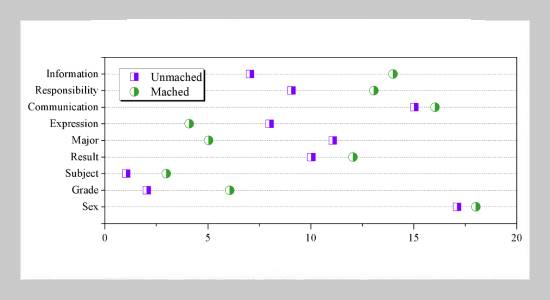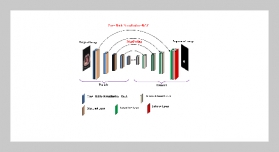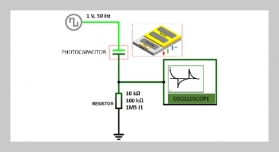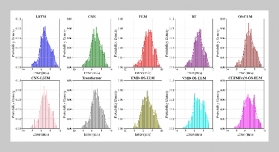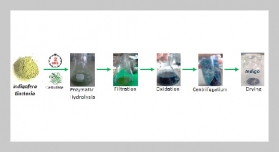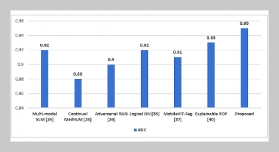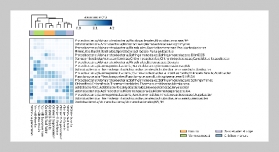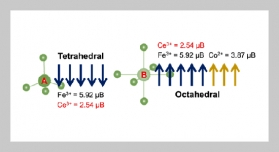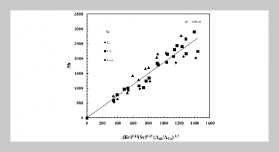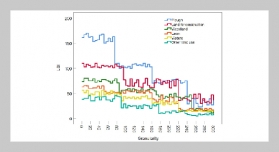- [1] P. S. Aithal and A. K. Maiya, (2023) “Innovations in higher education industry–Shaping the future" International Journal of Case Studies in Business, IT, and Education (IJCSBE) 7(4): 283–311.
- [2] A. Pandita and R. Kiran, (2023) “Tapping the potential of academic leadership, experiential learning, and employ ability of students to enhance higher educational institute performance" Sage Open 13(3): 21582440231183932. DOI: 10.1177/21582440231183932.
- [3] J. P. Haupt and A. C. Ogden. “Education abroad as a high-impact practice: Linking research and practice to the educational continuum”. In: Education Abroad and the Undergraduate Experience. Routledge, 2023, 43–57.
- [4] J. P. Haupt and A. C. Ogden. “Education abroad as a high-impact practice: Linking research and practice to the educational continuum”. In: Education Abroad and the Undergraduate Experience. Routledge, 2023, 43–57.
- [5] C. Wei, S. Jusoh, and R. S. A. R. A. Rahman, (2024) “ECONOMICDEVELOPMENTANDEDUCATIONAL INVESTMENT: SHAPINGTALENTTRAININGAND STUDENTINNOVATIONINSHANGHAI’SUNIVER SITIES" Tec Empresarial 6(2): 72–90.
- [6] M. Kim, D. Han, and J.-K. K. Rhee, (2021) “Multiview variational deep learning with application to practical indoor localization" IEEE Internet of Things Journal 8(15): 12375–12383. DOI: 10.1109/JIOT.2021.3063512.
- [7] E. Yurtsever, J. Lambert, A. Carballo, and K. Takeda, (2020) “A survey of autonomous driving: Common practices and emerging technologies" IEEE access 8: 58443 58469. DOI: 10.1109/ACCESS.2020.2983149.
- [8] A. Odena, C. Olsson, D. Andersen, and I. Goodfel low. “Tensorfuzz: Debugging neural networks with coverage-guided fuzzing”. In: International conference on machine learning. PMLR. 2019, 4901–4911.
- [9] C. Liu, T. Arnon, C. Lazarus, C. Strong, C. Barrett, M. J. Kochenderfer, et al., (2021) “Algorithms for verifying deep neural networks" Foundations and Trends® in Optimization 4(3-4): 244–404. DOI: 10. 1561/2400000035.
- [10] J.Wang,G.Dong,J.Sun,X.Wang,andP.Zhang.“Adversarial sample detection for deep neural network throughmodelmutationtesting”.In:2019IEEE/ACM 41st International Conference on Software Engineering (ICSE). IEEE. 2019, 1245–1256. DOI: 10.1109/ICSE.2019.00126.
- [11] R. Ashmore, R. Calinescu, and C. Paterson, (2021) “Assuring the machinelearning lifecycle: Desiderata, methods, and challenges" ACM computing surveys(CSUR) 54(5): 1–39. DOI: 10.1145/3453444.
- [12] W. Duan, J. Gu, M. Wen, G. Zhang, Y. Ji, and S. Mum taz, (2020) “Emerging technologies for 5G-IoV networks: applications, trends and opportunities" IEEE Network 34(5): 283–289. DOI: 10.1109/MNET.001.1900659.
- [13] D. Jiang, F. Wang, Z. Lv, S. Mumtaz, S. Al-Rubaye, A. Tsourdos, and O. Dobre, (2021) “QoE-aware effi cient content distribution scheme for satellite-terrestrial networks" IEEE Transactions on Mobile Computing 22(1): 443–458. DOI: 10.1109/TMC.2021.3074917.
- [14] G. Cai, Y. Fang, J. Wen, S. Mumtaz, Y. Song, and V. Frascolla, (2019) “Multi-carrier M-ary DCSK system with code index modulation: an efficient solution for chaotic communications" IEEE Journal of Selected Topics in Signal Processing 13(6): 1375–1386. DOI: 10.1109/JSTSP.2019.2913944.
- [15] S. Hussain, S. Gaftandzhieva, M. Maniruzzaman, R. Doneva, and Z. F. Muhsin, (2021) “Regression analysis of student academic performance using deep learning" Education and Information Technologies 26(1): 783 798. DOI: 10.1007/s10639-020-10241-0.
- [16] A. Alshanqiti and A. Namoun, (2020) “Predicting student performance and its influential factors using hybrid regression and multi-label classification" Ieee Access 8: 203827–203844. DOI: 10.1109/ACCESS.2020.3036572.
- [17] H. T. T. Le, H. T. T. Nguyen, T. P. La, T. T. T. Le, N. T. Nguyen, T. P. T. Nguyen, and T. Tran, (2020) “Factors Affecting Academic Performance of First-Year University Students: A Case of a Vietnamese University." International Journal of Education and Practice 8(2): 221–232.
- [18] J. Bravo-Agapito, S. J. Romero, and S. Pamplona, (2021) “Early prediction of undergraduate Student’s aca demic performance in completely online learning: A five year study" Computers in Human Behavior 115: 106595. DOI: 10.1016/j.chb.2020.106595.
- [19] M.Ya˘gcı, (2022) “Educational data mining: prediction of students’ academic performance using machine learning algorithms" Smart Learning Environments 9(1): 11. DOI: 10.1186/s40561-022-00192-z.
- [20] M. Kokoç and A. Altun, (2021) “Effects of learner interaction with learning dashboards on academic performance in an e-learning environment" Behaviour & In formation Technology 40(2): 161–175. DOI: 10.1080/0144929X.2019.1680731.
- [21] S. Lee, J.-H. Lee, and Y. Jeong, (2023) “The effects of digital textbooks on students’ academic performance, academic interest, and learning skills" Journal of Marketing Research 60(4): 792–811. DOI: 10.1177/00222437221130712.
- [22] F.-C. O. Yang, H.-M. Lai, and Y. -W. Wang, (2023) “Effect of augmented reality-based virtual educational robotics on programming students’ enjoyment of learning, computational thinking skills, and academic achievement" Computers & Education 195: 104721. DOI: 10.1016/j.compedu.2022.104721.
- [23] D. T. T. Loan, N. D. Tho, N. H. Nghia, V. D. Chien, and T. A. Tuan, (2024) “Analyzing students’ performance using fuzzy logic and hierarchical linear regression" International Journal of Modern Education and Computer Science 16(1): 1–10. DOI: 10.5815/ijmecs.2024.01.01.
- [24] Y. Xu, Y. Shang, and P. Lu, (2024) “The Relationship Between Family Educational Inputs and Middle School Students’ Academic Achievement: A Moderated Mediated Effects Analysis" Journal of Advanced Research in Education 3(3): 66–77.
- [25] A. Srinivasulu and V. Palanisamy, (2024) “Data Driven Revolution in Academic Support for Mathematics Underachievers through Random Forest Individual and Hybrid Model" Journal of Artificial Intelligence and System Modelling 2(03): 1–21. DOI: 10.22034/jaism. 2024.469529.1048.
- [26] J. Dong, (2024) “Optimizing Curriculum for Students: A Machine Learning Approach to Time Management Analysis" Journal of Artificial Intelligence and System Modelling 2(02): 36–51. DOI: 10.22034/jaism.2024. 453326.1032.
- [27] Z. Zhang, D. Wu, and C. Zhang, (2021) “Study of cellular traffic prediction based on multi-channel sparse LSTM "Computer Science 48(6): 296–300.
- [28] H.S. Gill, O. I. Khalaf, Y. Alotaibi, S. Alghamdi, and F. Alassery, (2022) “Multi-Model CNN-RNN-LSTM Based Fruit Recognition and Classification." Intelligent Automation &Soft Computing33(1): DOI: 10.32604/ iasc.2022.022589.
- [29] S. Rajendran, O. I. Khalaf, Y. Alotaibi, and S. Al ghamdi,(2021) “MapReduce-based big data classification model using feature subset selection and hyperparameter tuned deep belief network" Scientific Reports 11(1): 24138. DOI: 10.1038/s41598-021-03019-y.
- [30] O. I. Khalaf and G. M. Abdulsahib, (2021) “Design and Performance Analysis of Wireless IPv6 for Data Ex change." Journal of Information Science & Engineering 37(6): DOI: 10.6688/JISE.202111_37(6).0008.
- [31] Y. Yuan and W.Banzhaf, (2018) “Arja: Automated re pair of java programs via multi-objective genetic program ming" IEEE Transactions on software engineering 46(10): 1040–1067. DOI: 10.1109/TSE.2018.2874648.
- [32] Y. Chen, H. Chang, J. Meng, and D. Zhang, (2019) “Ensemble Neural Networks (ENN): A gradient-free stochastic method" Neural Networks 110: 170–185. DOI: 10.1016/j.neunet.2018.11.009.
- [33] C.Yang, A. Kortylewski, C. Xie, Y. Cao, and A. Yuille. “Patchattack: A black-box texture-based attack with reinforcement learning”. In: European Conference on Computer Vision. Springer. 2020, 681–698. DOI: 10. 1007/978-3-030-58574-7_41.
